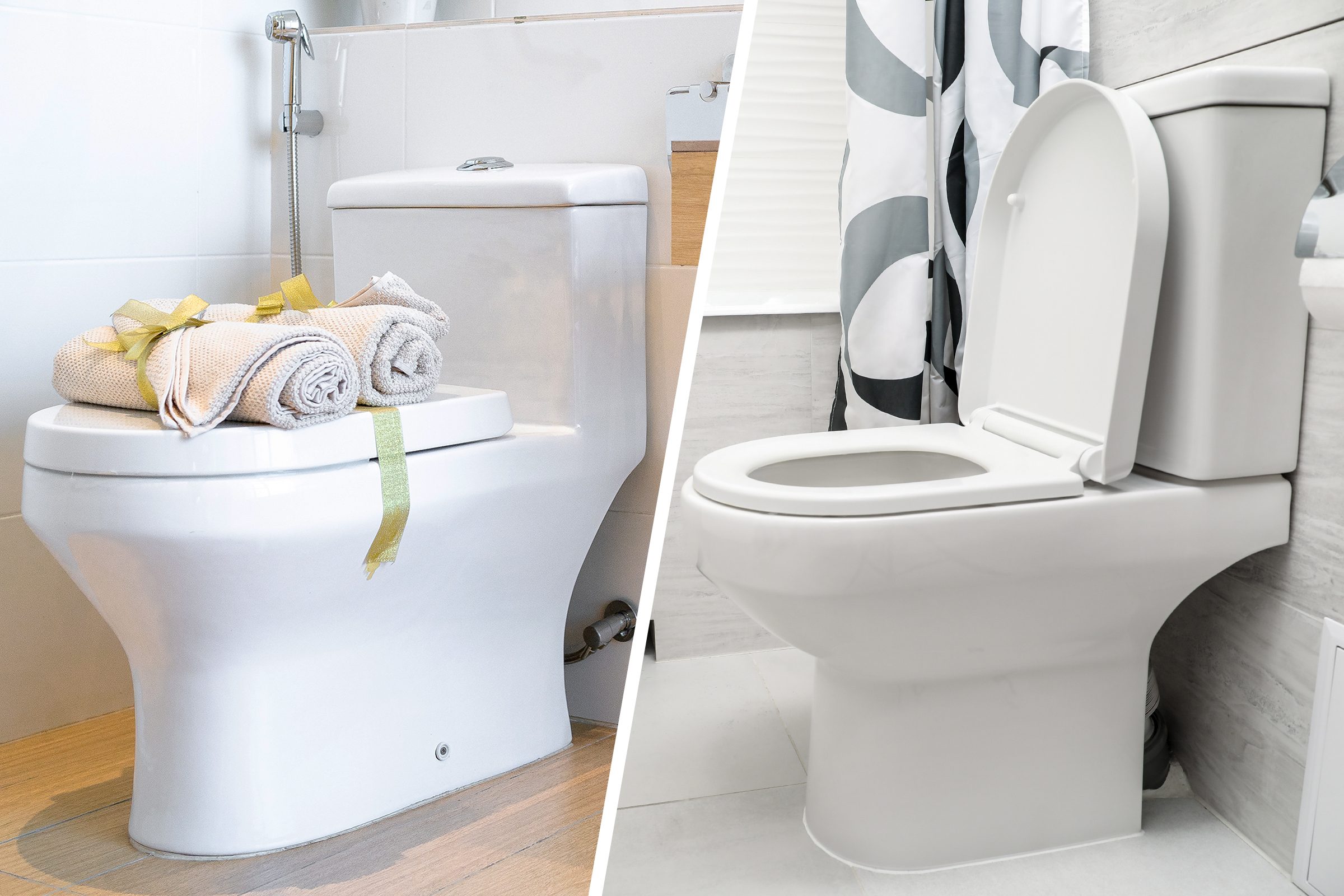Benefits of a Second Toilet: Second Toilet In Bathroom
Imagine this: you’re getting ready for a big day out, but the bathroom is already occupied. You’re running late, and the stress starts to build. Sound familiar? Well, a second toilet can be the solution to this common morning mayhem, and it’s not just about convenience. A second toilet can significantly improve the flow of your daily routine, especially in busy households.
Increased Convenience and Reduced Wait Times
A second toilet can dramatically reduce wait times, especially during peak hours like mornings or evenings. This means less stress and more time to focus on other things. Imagine the peace of mind knowing that everyone can get ready without waiting in line for the bathroom. It’s a simple change that can have a big impact on your daily life.
Considerations for Installation

Installing a second toilet in your bathroom is a decision that requires careful planning. It’s not just about picking a spot and calling a plumber. There are many factors to consider to ensure the installation is both practical and aesthetically pleasing.
Placement Options
The location of your second toilet can significantly impact its functionality and the overall flow of your bathroom. Here are some common placement options and their pros and cons:
- Near the existing toilet: This option offers the most straightforward installation, as plumbing and electrical connections are likely already in place. However, it can create a crowded and less-than-ideal layout, especially in smaller bathrooms.
- In a corner: This placement maximizes space and can be a good option for adding a powder room. However, it might require additional plumbing and electrical work.
- Adjacent to a shower or bathtub: This option provides convenient access for those who need to use the toilet after showering or bathing. However, it might necessitate moving existing fixtures or adding a new vent.
Plumbing and Electrical Requirements, Second toilet in bathroom
To ensure a smooth and successful installation, it’s essential to consider the following plumbing and electrical requirements:
- Water supply: You’ll need a dedicated water supply line for the new toilet. This might involve tapping into an existing line or running a new one from the main water source. Consult with a licensed plumber to determine the best approach for your bathroom.
- Waste and vent lines: The new toilet needs to be connected to the existing waste and vent lines. This might require extending the lines or installing a new vent stack. It’s crucial to comply with local building codes and ensure proper ventilation to prevent sewer gases from entering the bathroom.
- Electrical outlet: A nearby electrical outlet is necessary for the toilet’s electrical components, such as a bidet or a heated seat. It’s recommended to install a dedicated outlet for the toilet to avoid overloading existing circuits.
Remember to always consult with a qualified professional before undertaking any plumbing or electrical work. They can assess your bathroom’s layout and provide expert guidance on the best installation options.
Design and Aesthetics
Adding a second toilet to your bathroom can be a stylish and functional upgrade, but it’s crucial to consider the design and aesthetics to ensure it seamlessly blends with the existing space. Choosing the right toilet style and design can elevate the overall look and feel of your bathroom, transforming it into a sanctuary of relaxation and sophistication.
Choosing the Right Toilet Style
The right toilet style can make all the difference in enhancing your bathroom’s aesthetic. From classic to contemporary, there’s a wide range of styles to choose from, each with its own unique charm. Here are some popular toilet styles to consider:
- One-piece toilets: These sleek and modern toilets offer a minimalist look with a single, seamless design. They are easy to clean and maintain, making them a popular choice for contemporary bathrooms.
- Two-piece toilets: The traditional choice, two-piece toilets feature a separate tank and bowl. They offer a classic look and are generally more affordable than one-piece toilets.
- Wall-mounted toilets: These toilets are suspended from the wall, creating a modern and minimalist look. They also offer easy cleaning access and can make the bathroom appear larger.
- Smart toilets: These high-tech toilets offer features like heated seats, automatic flushing, and even bidet functionality. They are ideal for those who prioritize comfort and convenience.
Incorporating a Second Toilet Seamlessly
Integrating a second toilet into your bathroom design requires careful consideration. Here are some tips to ensure a harmonious and visually appealing outcome:
- Match the style: Choose a toilet style that complements the existing fixtures and design theme of your bathroom. For example, if your bathroom has a traditional style, a two-piece toilet would be a good choice. If your bathroom is modern, a one-piece or wall-mounted toilet would be more suitable.
- Consider the layout: Think about the placement of the second toilet and how it will affect the flow of traffic in the bathroom. It’s important to ensure there’s enough space for comfortable movement around the toilet.
- Choose complementary colors: Select a toilet color that complements the existing bathroom decor. If your bathroom has a neutral color palette, a white or off-white toilet would be a good choice. If your bathroom has a bolder color scheme, you can choose a toilet in a complementary color.
- Add decorative touches: You can add decorative touches to the second toilet area to enhance its aesthetic appeal. For example, you can add a decorative rug, a small plant, or a wall-mounted shelf.

